-
 Bitcoin
Bitcoin $108,489.6704
1.13% -
 Ethereum
Ethereum $2,502.0528
2.92% -
 Tether USDt
Tether USDt $1.0002
0.00% -
 XRP
XRP $2.1941
0.51% -
 BNB
BNB $655.3375
1.00% -
 Solana
Solana $151.5977
1.27% -
 USDC
USDC $0.9999
0.00% -
 TRON
TRON $0.2768
0.32% -
 Dogecoin
Dogecoin $0.1676
2.86% -
 Cardano
Cardano $0.5675
0.98% -
 Hyperliquid
Hyperliquid $40.6109
7.48% -
 Bitcoin Cash
Bitcoin Cash $500.7746
2.09% -
 Sui
Sui $2.8328
2.03% -
 Chainlink
Chainlink $13.4452
1.26% -
 UNUS SED LEO
UNUS SED LEO $9.1623
0.39% -
 Avalanche
Avalanche $18.2267
2.24% -
 Stellar
Stellar $0.2382
0.00% -
 Toncoin
Toncoin $2.8885
1.68% -
 Shiba Inu
Shiba Inu $0.0...01159
0.91% -
 Litecoin
Litecoin $87.1827
0.88% -
 Hedera
Hedera $0.1511
2.90% -
 Monero
Monero $315.4992
-0.59% -
 Polkadot
Polkadot $3.4663
2.34% -
 Bitget Token
Bitget Token $4.6118
-0.65% -
 Dai
Dai $1.0000
-0.01% -
 Ethena USDe
Ethena USDe $1.0003
0.02% -
 Uniswap
Uniswap $7.2989
4.69% -
 Pepe
Pepe $0.0...01003
5.73% -
 Aave
Aave $275.5616
7.15% -
 Pi
Pi $0.5181
-2.49%
Which one is faster to execute, the limit order or the market order of MEXC contract? Is there a big difference in slippage?
On MEXC, limit orders offer price control but may not execute quickly, while market orders ensure fast execution but can result in slippage, impacting your trading strategy.
May 07, 2025 at 02:07 am
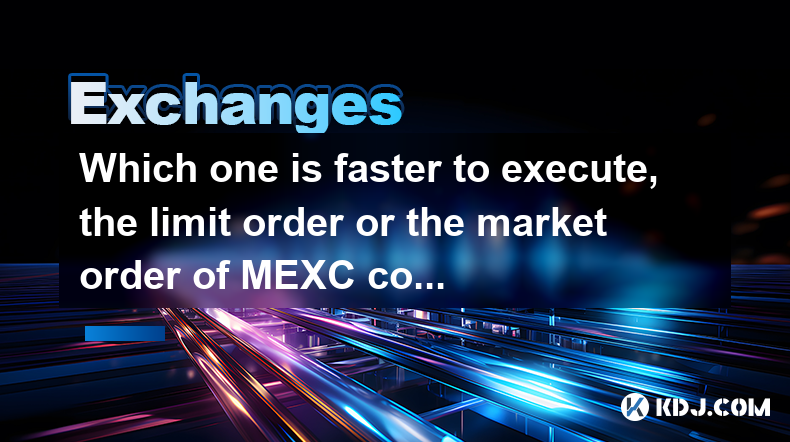
When trading on the MEXC cryptocurrency exchange, understanding the differences between limit orders and market orders, especially in terms of execution speed and slippage, is crucial for effective trading. Both types of orders have their unique characteristics and use cases, and knowing when to use each can significantly impact your trading strategy.
Understanding Limit Orders and Market Orders
A limit order is an order to buy or sell a cryptocurrency at a specific price or better. For example, if you want to buy Bitcoin at $30,000, you can set a limit order at that price. The order will only be executed if the market price reaches or falls below $30,000. This type of order gives you more control over the price at which you trade but does not guarantee execution.
On the other hand, a market order is an order to buy or sell a cryptocurrency at the current market price. When you place a market order, it is executed immediately at the best available price. This type of order guarantees execution but does not guarantee the price at which it will be executed.
Execution Speed of Limit Orders vs. Market Orders
The execution speed of a market order is generally faster than that of a limit order. When you place a market order on MEXC, it is immediately matched with the best available price in the order book and executed. This means that market orders are typically executed within milliseconds, making them ideal for traders who want to enter or exit a position quickly.
In contrast, a limit order may take longer to execute because it is only filled when the market price reaches the specified limit price. If the market does not reach your limit price, the order may remain unfilled. Therefore, the execution speed of a limit order depends on market conditions and the specified limit price.
Slippage in Limit Orders vs. Market Orders
Slippage refers to the difference between the expected price of a trade and the price at which the trade is actually executed. Market orders are more prone to slippage because they are executed at the best available price, which can change rapidly in volatile markets.
For example, if you place a market order to buy Bitcoin, and the best available price is $30,000, but by the time your order is executed, the price has risen to $30,010, you will experience positive slippage of $10. Conversely, if the price drops to $29,990, you will experience negative slippage of $10.
Limit orders, on the other hand, can help minimize slippage because they are executed at the specified limit price or better. However, if the market moves away from your limit price, your order may not be filled, and you may miss the opportunity to trade.
Practical Examples of Limit and Market Orders on MEXC
To illustrate the differences between limit and market orders on MEXC, let's consider a practical example. Suppose you want to buy 1 BTC at a price of $30,000.
Using a Limit Order:
- Log into your MEXC account and navigate to the trading page.
- Select the BTC/USDT trading pair.
- Click on the "Buy" button and choose "Limit Order."
- Enter the price of $30,000 and the quantity of 1 BTC.
- Click "Submit" to place the order.
- The order will be executed only if the market price reaches or falls below $30,000.
Using a Market Order:
- Log into your MEXC account and navigate to the trading page.
- Select the BTC/USDT trading pair.
- Click on the "Buy" button and choose "Market Order."
- Enter the quantity of 1 BTC.
- Click "Submit" to place the order.
- The order will be executed immediately at the best available market price.
Factors Affecting Execution Speed and Slippage
Several factors can influence the execution speed and slippage of both limit and market orders on MEXC. These include:
- Market Liquidity: Higher liquidity generally results in faster execution and less slippage. In a highly liquid market, there are more buy and sell orders available, making it easier to match your order quickly.
- Volatility: In volatile markets, prices can change rapidly, increasing the likelihood of slippage for market orders. Limit orders can help mitigate this risk but may take longer to execute.
- Order Size: Larger orders may take longer to execute and are more likely to experience slippage, especially in less liquid markets.
- Time of Day: Trading volumes and liquidity can vary depending on the time of day, which can affect execution speed and slippage.
Choosing Between Limit and Market Orders
Deciding whether to use a limit order or a market order depends on your trading goals and market conditions. Here are some considerations to keep in mind:
- If you prioritize price control: Use a limit order. This is ideal if you have a specific price in mind and are willing to wait for the market to reach that price.
- If you prioritize speed and immediate execution: Use a market order. This is suitable if you need to enter or exit a position quickly, even if it means accepting potential slippage.
- If you are trading in a highly volatile market: Consider using limit orders to minimize slippage, but be aware that your order may not be filled if the market moves away from your limit price.
- If you are trading a highly liquid asset: Market orders may be more appropriate, as the likelihood of significant slippage is lower.
Frequently Asked Questions
Q1: Can I cancel a limit order on MEXC if it hasn't been executed yet?
Yes, you can cancel a limit order on MEXC at any time before it is executed. To do this, navigate to the "Open Orders" section of your trading page, find the limit order you want to cancel, and click on the "Cancel" button next to it.
Q2: How does MEXC handle partial fills for limit orders?
MEXC allows for partial fills of limit orders. If your limit order cannot be fully executed at the specified price, it will be partially filled at the best available price, and the remaining quantity will remain as an open order until it is either fully filled or canceled.
Q3: Are there any fees associated with using limit and market orders on MEXC?
Yes, MEXC charges trading fees for both limit and market orders. The fee structure depends on your trading volume and whether you are a maker or a taker. Limit orders that add liquidity to the market are typically charged maker fees, while market orders that take liquidity are charged taker fees. You can find the specific fee rates on the MEXC website.
Q4: Can I set a time limit for my limit orders on MEXC?
Yes, MEXC allows you to set a time limit for your limit orders. You can choose between "Good Till Canceled" (GTC), which keeps the order open until it is filled or canceled, and "Immediate or Cancel" (IOC), which fills the order immediately at the specified price or cancels it if it cannot be filled.
Disclaimer:info@kdj.com
The information provided is not trading advice. kdj.com does not assume any responsibility for any investments made based on the information provided in this article. Cryptocurrencies are highly volatile and it is highly recommended that you invest with caution after thorough research!
If you believe that the content used on this website infringes your copyright, please contact us immediately (info@kdj.com) and we will delete it promptly.
- Wintermute, Bitcoin Lending, and Cantor Fitzgerald: A New Chapter?
- 2025-06-30 16:30:12
- Polkadot: From Ethereum Killer to Ghost Chain? The Crypto Fading Phenomenon
- 2025-06-30 16:50:12
- Bitget Lists NodeOps (NODE) for Spot Trading: A New Era for DePIN?
- 2025-06-30 16:30:12
- Warren Buffett, Bitcoin, and the Oracle of Omaha's Evolving Views
- 2025-06-30 16:35:12
- Blockchain, Bitcoin, and Holdings: Navigating the Crypto Landscape in Style
- 2025-06-30 17:10:11
- PEPE Price Breakout Watch: Will the Frog Leap or Flop?
- 2025-06-30 17:10:11
Related knowledge
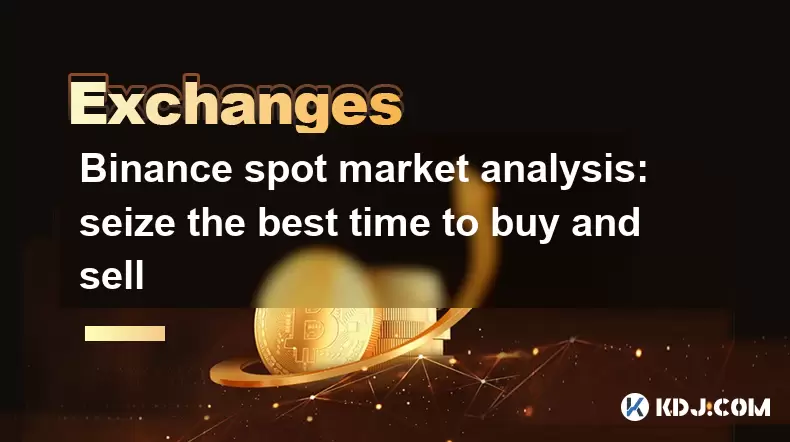
Binance spot market analysis: seize the best time to buy and sell
Jun 19,2025 at 04:56pm
Understanding the Binance Spot MarketThe Binance spot market is one of the most popular platforms for cryptocurrency trading globally. It allows users to trade digital assets at current market prices, making it essential for traders aiming to buy low and sell high. Unlike futures or margin trading, spot trading involves direct ownership of the asset aft...
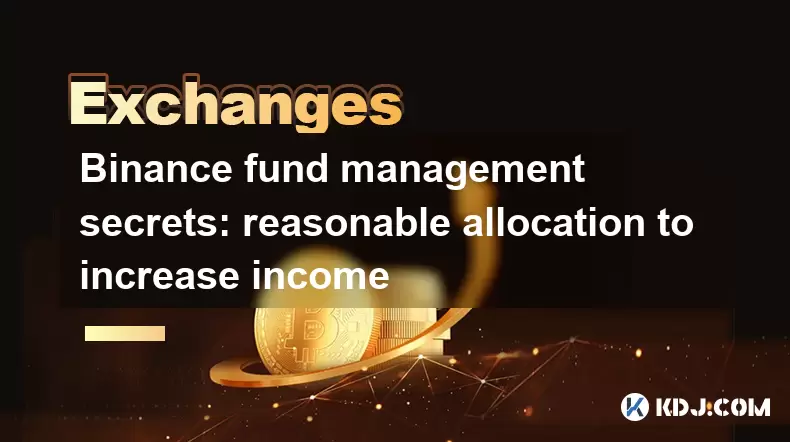
Binance fund management secrets: reasonable allocation to increase income
Jun 22,2025 at 02:29pm
Understanding Binance Fund ManagementBinance fund management involves strategic allocation of your cryptocurrency assets to optimize returns while managing risk. The key to successful fund management lies in understanding how different investment options on the Binance platform can be utilized to create a diversified portfolio. This includes spot tradin...
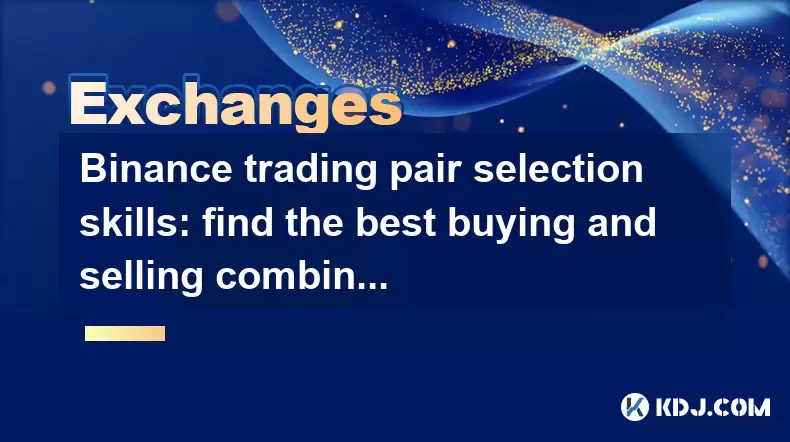
Binance trading pair selection skills: find the best buying and selling combination
Jun 23,2025 at 02:49am
Understanding the Basics of Trading Pairs on BinanceBefore diving into trading pair selection skills, it's essential to understand what a trading pair is. On Binance, a trading pair refers to two cryptocurrencies that can be traded against each other. For example, BTC/USDT means Bitcoin is being traded against Tether. Each trading pair has its own liqui...
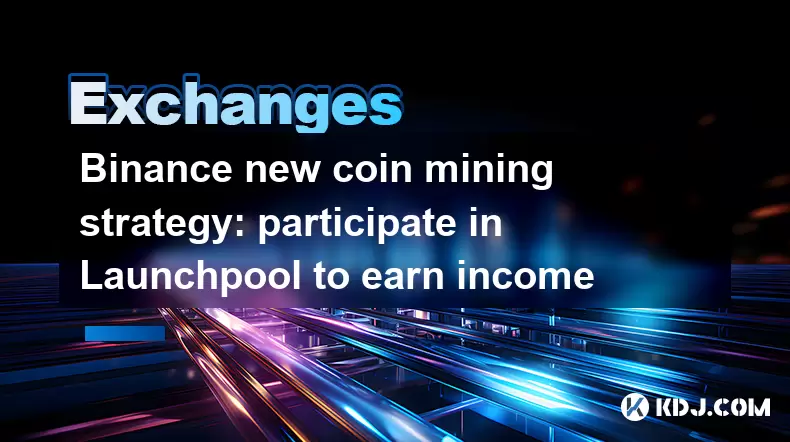
Binance new coin mining strategy: participate in Launchpool to earn income
Jun 23,2025 at 11:56am
What is Binance Launchpool and how does it work?Binance Launchpool is a feature introduced by the world’s largest cryptocurrency exchange, Binance, to allow users to earn new tokens through staking. This platform enables users to stake their existing cryptocurrencies (such as BNB, BUSD, or other supported assets) in exchange for newly launched tokens. T...
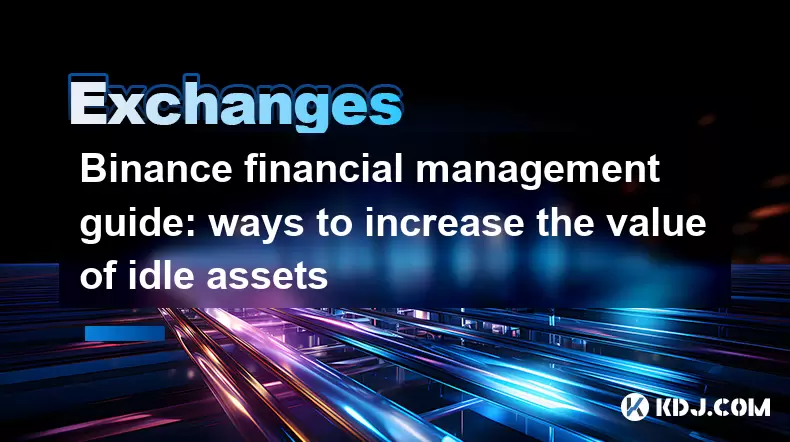
Binance financial management guide: ways to increase the value of idle assets
Jun 19,2025 at 11:22pm
Understanding Idle Assets in the Cryptocurrency SpaceIn the fast-paced world of cryptocurrency, idle assets refer to digital currencies that are not actively being used for trading, staking, or yield farming. Holding these funds in a wallet without utilizing them means missing out on potential growth opportunities. Binance, as one of the leading platfor...
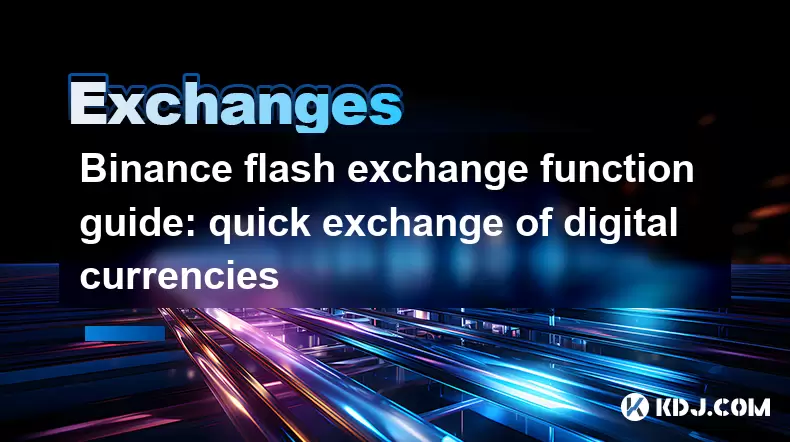
Binance flash exchange function guide: quick exchange of digital currencies
Jun 23,2025 at 12:29pm
What is the Binance Flash Exchange Function?The Binance Flash Exchange function is a powerful tool designed to allow users to instantly swap between supported cryptocurrencies without the need for placing traditional buy/sell orders. This feature simplifies the trading process by offering a direct exchange mechanism, eliminating the requirement to conve...

Binance spot market analysis: seize the best time to buy and sell
Jun 19,2025 at 04:56pm
Understanding the Binance Spot MarketThe Binance spot market is one of the most popular platforms for cryptocurrency trading globally. It allows users to trade digital assets at current market prices, making it essential for traders aiming to buy low and sell high. Unlike futures or margin trading, spot trading involves direct ownership of the asset aft...

Binance fund management secrets: reasonable allocation to increase income
Jun 22,2025 at 02:29pm
Understanding Binance Fund ManagementBinance fund management involves strategic allocation of your cryptocurrency assets to optimize returns while managing risk. The key to successful fund management lies in understanding how different investment options on the Binance platform can be utilized to create a diversified portfolio. This includes spot tradin...

Binance trading pair selection skills: find the best buying and selling combination
Jun 23,2025 at 02:49am
Understanding the Basics of Trading Pairs on BinanceBefore diving into trading pair selection skills, it's essential to understand what a trading pair is. On Binance, a trading pair refers to two cryptocurrencies that can be traded against each other. For example, BTC/USDT means Bitcoin is being traded against Tether. Each trading pair has its own liqui...

Binance new coin mining strategy: participate in Launchpool to earn income
Jun 23,2025 at 11:56am
What is Binance Launchpool and how does it work?Binance Launchpool is a feature introduced by the world’s largest cryptocurrency exchange, Binance, to allow users to earn new tokens through staking. This platform enables users to stake their existing cryptocurrencies (such as BNB, BUSD, or other supported assets) in exchange for newly launched tokens. T...

Binance financial management guide: ways to increase the value of idle assets
Jun 19,2025 at 11:22pm
Understanding Idle Assets in the Cryptocurrency SpaceIn the fast-paced world of cryptocurrency, idle assets refer to digital currencies that are not actively being used for trading, staking, or yield farming. Holding these funds in a wallet without utilizing them means missing out on potential growth opportunities. Binance, as one of the leading platfor...

Binance flash exchange function guide: quick exchange of digital currencies
Jun 23,2025 at 12:29pm
What is the Binance Flash Exchange Function?The Binance Flash Exchange function is a powerful tool designed to allow users to instantly swap between supported cryptocurrencies without the need for placing traditional buy/sell orders. This feature simplifies the trading process by offering a direct exchange mechanism, eliminating the requirement to conve...
See all articles

























































































